Greek Mythology Competition!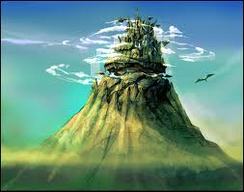 Mount Olympus Mount Olympus On March 11, we began our study of Europe with the foundations of western civilization in Ancient Greece, mapping the peninsula and islands, the bodies of water, important cities, and that most important mountain, Mount Olympus. Next, we learned about the mythological residents of Mount Olympus -- the Greek gods and goddesses. We read the first few stories in D'Aulaires' Book of Greek Myths in class. It is the best collection of Greek myths for children that I know. In preparation for a Greek Mythology competition, we formed teams and students met to plan their strategies with each child taking on the responsibility of studying certain stories or characters from the myths. On March 18, we held our competition and the kids had an opportunity to show just how much they had learned about Greek myths. Nicely done! The students also had a creative writing assignment describing an imaginary encounter with a Greek god or goddess! Camelot and King Arthur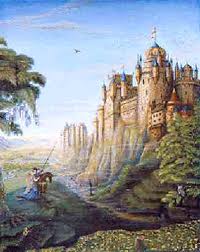 Camelot Camelot This week our travels through time and place brought us to England, to Camelot with King Arthur and the Knights of the Round Table. After an overview of the myth of King Arthur, we learned about feudalism, putting the stories in that political and economic context. Before we dove in, we considered the historical and fantastic elements of the stories, reading Sir Gawain the True, from the wonderful series by Gerald Morris, "The Knights' Tales." We read much of this lighthearted retelling of Sir Gawain and the Green Knight, leaving Sir Gawain on his way to fulfill his vow to let the giant green knight take a swing at his neck with an ax. Students may want to get this book so that they can find out how it ends! If you enjoy it, there are several more in this series which makes the King Arthur myths appropriate and accessible for younger readers. After enjoying the story, we worked on maps of the United Kingdom, finding important cities and bodies of water. For homework, each student chose a story map to complete. These will help them to consider the important elements of a story: plot, character, and setting. I hope this will help them to prepare for their class presentations later in the semester, which may be a folktale, original story, or geographical report. Next week, we will travel to Northern and Eastern Europe, enjoying Norse Myths and Polish Folktales. I hope you have a great week! Thinking, Knowledge & Science 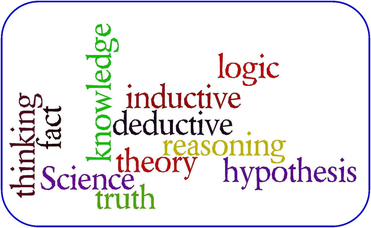 This week we followed in the footsteps of the ancient Greek philosophers as we pondered these important and timeless questions:
Students then reviewed their Quest workbook pages 32-33 on the definitions of hypothesis, theory, and fact, as these relate to the work and ideas of several of the ancient scientists we have learned about through our reading. Students should remember that the ideas of these ancient scientists (the Ionians and Democritus) were revolutionary, yet unproved hypotheses chiefly because the ancient Greeks lacked the modern technology and means to prove or disprove their ideas. It would be many hundreds of years before science could develop these theories further. And so, at this point in history, philosophers turned instead to the study of reason. Plato and Aristotle
Aristotle, Plato's student, argued that knowledge and universal principles come from experience. As a great observer and synthesizer of information, Aristotle attempted to create one theory to classify all knowledge. His work ranged over the fields of biology, chemistry, astronomy, light, vision, and the study of logic. And although his geocentric (earth-centered) cosmology was flawed, his ideas and massive body of work set the backdrop for all future developments in modern science. For a brief overview of the contributions of Socrates, Plato, and Aristotle, view this. (okay, so it's mostly the Jack Johnson background music that really makes it worthwhile!). And...An Impromptu Debate We concluded class with a mini debate which required students to apply the types of thinking and reasoning skills we had been discussing. The class split into two teams (boys vs. girls) and took up positions on the intriguing question: Will technology ultimately save or destroy the earth? With only about fifteen minutes to prepare, students did a good job of working together and crafting some solid points for argument. Unfortunately we did not have enough time to fully develop the topic and support and defend positions, but it was a worthwhile thinking exercise and introduction to debate. We will hope to continue the dialogue and debate format in future classes. Homework... For next week, students should read Chapters 13 and 14 in the text and review all material from Chapters 1-13 in preparation for a rousing game of Jeopardy! (prizes to be awarded to those that study hard!)
Have a great weekend! Analyzing the Evidence 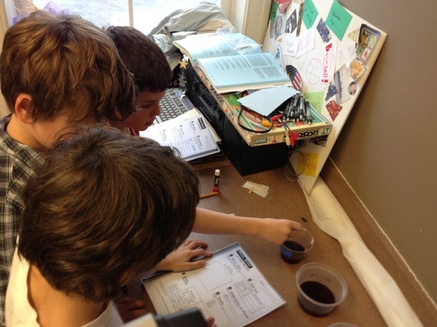 This week began the testing phase of our investigation. The students worked in teams analyzing evidence found at the scene. After reviewing the clues we have so far the students rotated through five stations where they conducted tests to give us a clearer picture of what could have happened to our victim, Felix. Fingerprints on cups found at the scene were compared to the fingerprints of our suspects. The gas from a few drops of Krazy Glue, which was added to the evidence bag containing the cups, made the fingerprints turn white so they could be more easily seen. One scent from each of our 5 people of interest were compared to a shredded towel found at the scene, which had a lingering scent. Students had to see which scent most closely resembled the one on the towel. The cola found in the two cups at the scene were compared to regular cola using pH strips. Did the two cups of cola closely resemble the pH of the regular cola or was something added to one of them? Cotton and wool threads were compared to the threads found at the scene by watching how each type burned. Did it burn slowly or quickly? What did the ashes look like? Finally, a mysterious brown stain was compared to a brown felt marker found in one of the suspect’s pockets and the coating of a brown kind of candy one of our suspects enjoys eating. Which one did it turn out to be?
Next week we will share our findings, performing tests together to settle any disagreements over results. The crime is slowly beginning to take shape, but much confusion still exists as we try to narrow down which clues lead us to the murderer and which ones take us in the wrong direction. We kicked off our last mythology class by reading aloud the bio-poems that the students had written for last week's homework. All students presented poems and generally followed the bio-poem prompts. All were well-written and a few were extraordinary. Nice work, team! We then spent considerable time analyzing and discussing the themes within The Odyssey, particularly revolving around the so-called "Search for Odysseus." We touched on ideas and concepts such as self-doubt, negativity, identity, and traditional vs. modern parent-child roles and relationships. Good stuff, no? The students never fail to impress us with their maturity and insight on these topics and Susan and I have very much enjoyed this time spent in "free discussion." Following on our poetry theme from last week, we tied three modern poetry pieces to The Odyssey: "Penelope" by Dorothy Parker, "Ithaka" by Constantine Cavafy, and "Ulysses" by Alfred, Lord Tennyson. I attempted to read some rather poignant material to the students along with the poem, "Ithaka," but failed miserably in that attempt, and was thankfully rescued by Mrs. Martz. I copy the poem here, along with some of the background text, as it expresses to all of you what's in my heart as I leave my New Jersey home behind.
Excerpt from "Ithaka" by Constantine P. CavafyAs you set out for Ithaka We closed our wonderful class with a final reading of "Searching for Odysseus." The students continue to make progress in many areas including, expression, diction and movement. Next week, Hamlet! 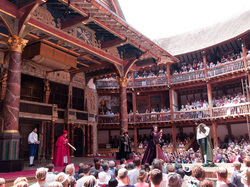 For homework, students will go on a Shakespeare Web Quest to find out some basic background information on The Bard before diving into Hamlet. Handouts with instructions were given to visit three different web-sites. Go to each site when instructed and read the information given in that site. Then, answer the questions asked. You many need to go beyond the first page of a site to find the information. Next week, I will be passing on Susan's reflections from class and posting the homework assignment (I'm sure the students are glad I will still be available for that task :>). And the Plot Thickens... 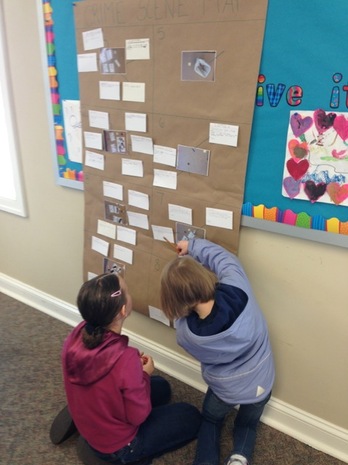 We started off this session by analyzing our missing evidence from last week and going over our crime scene map. Details were added and theories began to take shape. Students were shown the suspect’s photos along with information the detectives provided us with. Each suspect had a statement along with pieces of information that might be crucial to figuring out this mystery. Unfortunately, Felix’s body was lost (or stolen?) on the way to the morgue, so we don’t know if he is even dead! Using the evidence from the crime scene we made a clue board by posting each piece of evidence under the name of the suspect it could possibly go with. Students are now being encouraged to make some inferences as a story is beginning to take shape. Next week we will organize the clues under each suspect and begin analyzing the evidence by having testing stations. This session we spent a lot of time coming to a consensus, within teams and with the whole class. They did a great job debating ideas and organizing details so we can logically process the evidence. I reminded them that there is no right answer to this mystery. Just like real life, a case doesn’t always have a definitive answer. It’s up to us to use what we know to piece together what could have occurred. Next week we will have more evidence to process as the test results give us more clues. Wrapping Up Pythagoras 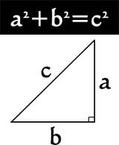 Pythagorean Theorem Pythagorean Theorem Students opened class this week by listing the many and varied practical applications of the Pythagorean Theorem - architecture, carpentry, navigation, surveying, geometry, trigonometry, digital graphics, etc. Great job everyone on researching this topic and completing the homework! Ancient Atomic Theory 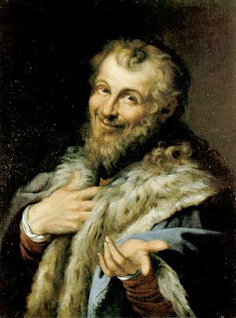 Democritus (ca. 300 B.C.E.) Democritus (ca. 300 B.C.E.) We then broke into small groups and students worked together to answer questions related to their assigned reading of Chapter 10. We reviewed the work of Greek philosopher Democritus and his remarkably advanced atomic theory and speculated on the significant obstacle ancient scientists had in proving a theory of atoms - namely that they lacked the technology for observation and experimentation. Democritus' hypothesis of the indivisible atom as the smallest universal building block of life would not be further developed for another twenty-two centuries until the work of British chemist and physicist John Dalton in 1803. This ancient hypothesis that small, indestructible particles (atoms) make up everything in the universe may seem simple to us today, but it was a remarkably profound achievement and cutting-edge thinking in 300 B.C.E.! We spent some time discussing our current understanding of the atom and briefly reviewed the definitions for element, atom, molecule, and compound (students should see if they can explain the "ice cream shop" analogy to a parent or sibling!). 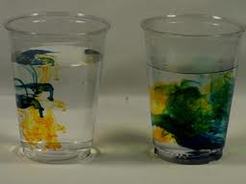 Students then broke into pairs and conducted a simple experiment to consider how we can explain the way molecules act if we cannot see them. Each team put several drops of food coloring into a cup of cold water and a cup of hot water and observed/sketched what happened. We discussed how the rate of the spread of the food coloring could be explained by the motion of atoms (heat provides energy to the molecules, causing them to vibrate, bounce around and move more quickly). We also learned about the Second Law of Thermodynamics and the physical principle of entropy (which causes the molecules to become less organized). Students recorded their findings in their Student Quest Guide worksheet (page 34). Homework! For next week....
Searching for Odysseus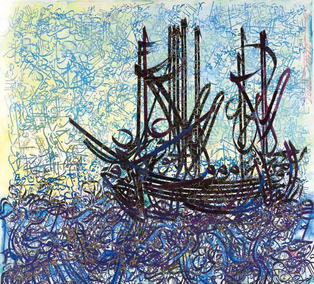 This week we began a new readers theater script which picked up our story of The Odyssey at the point where Odysseus' son, Telemachus, begins his search for his long-lost father. The students are doing a much better job of delivering their lines with an understanding of how the text should be read by following the directions indicated in the script (angrily, sarcastically, etc.), so kudos! We paused at various moments to discuss some interesting themes that seem to re-occur within the story. Susan and I always enjoy these discussions, as they typically reveal our student's deeper understanding of many of these concepts. As a whole, the group still thinks in very concrete terms, which as I told them yesterday is not necessarily a bad thing. Thinking a bit more abstractly is something we would eventually like to see them explore a little more. Poetry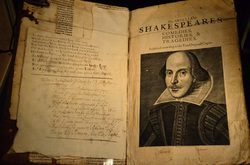 To that end, we are taking some time to look at poetry, since The Odyssey is, in fact, a poem. Yesterday we read two poems about Helen of Troy -- one by Edgar Allan Poe, the other by H.D. (Hilda Doolittle). Written about 100 years apart, the poems showcase two different styles with two completely different meanings, which were not immediately obvious to the class. This type of poetry "investigation" will prepare them for tackling Shakespearian language. Next week we will continue the poetry theme by looking at additional "Odyssey" related poems, penned by writers such as Dorothy Parker, Constantine Cavafy, and Alfred, Lord Tennyson. For homework students will write some poetry of their own! Instructions were given to write a Bio-Poem using several prompts. They will likely need to conduct some additional at-home research on their character of choice in order to complete it. Next week, we'll discuss and analyze more deeply the themes within the latter part of The Odyssey, share our bio-poems, and perform "Searching for Odysseus" for the final time. On April 1, we move on to Shakespeare and Hamlet -- no fooling! :) Until then. A Crime Within A Crime! 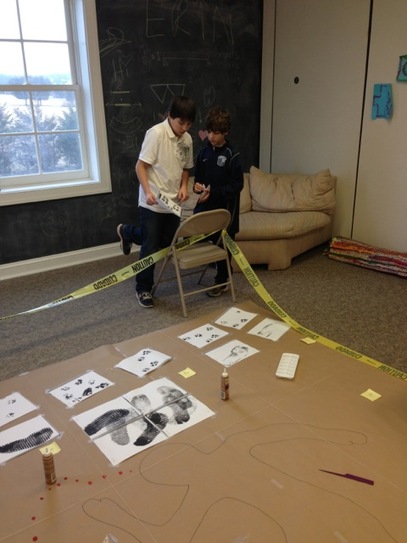 Our new unit started off with some mystery! Students were very excited to view the crime scene and get started piecing together details of what could have happened to our victim. So much so, that they began creating a story of what happened before we even walked into the room! We discussed how important it is to differentiate between evidence and inference...something that had to be repeated several times throughout the class as stories kept developing. Students spent several minutes surveying from outside the crime scene tape. We wrote down several of our observations, being careful not to infer our own ideas of what something might be. After we wrote a long list we realized we needed to go back and change that we observed “several drops of blood” to “several drops of red liquid”. Until we test them we don’t know for sure what they are! It’s amazing how we all quickly jump to our own conclusions.
Development and Use of Math 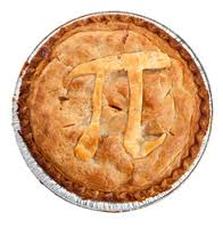 This week in class we reviewed what we have discovered so far on our journey through history about how ancient civilizations used and developed math. We discussed the Babylonians practical use of accounting tokens for trading goods, keeping records and dividing up land; and the Egyptians use of geometry and measurement for building amazing works of architecture such as pyramids and temples. We acknowledged the intellectual leap from simple counting with tally marks to the use of a mathematical symbols (arabic numbers) as a further level of abstraction and a universal way to assess quantity and perform calculations. The fact that the symbol '5' could stand for number of sheep as well as number of people or sacks of grain provided a language for mathematical dialogue. It was the Greeks however who really pushed math to a whole new level by marrying it with science. In fact, they saw math as the language of science, not just a practical endeavor, but a way to reason and understand the world. 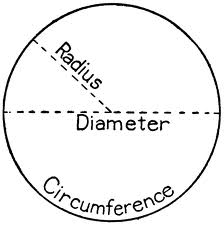 We reviewed the parts of a circle using the Student Quest worksheet which was due as homework and then students spent some time measuring a variety of circular objects of different sizes using string and recording the circumferences (C) and diameters (D). We then computed the value of C/D for all objects to see that the value of this ratio, regardless of circle size, is nearly the same (allowing for measurement differences). The ancient Greeks, along with many other ancient cultures, had observed the same thing. The ancients were fascinated with the perfect form and function of the circle and many ancient mathematicians tried to determine the exact mathematical expression for this ratio. Why? Because if determined it would allow them to accurately compute the circumference of a circle (and it's area), and make it easy to measure circles of all sizes! Of course we now know this number as pi (the 16th Greek letter). We discussed why there was such difficulty in determining the value of pi. Turns out, it's a complicated number! And that is something that did not sit well with the Greeks who valued form and order and exactness in their math. Pi in fact is an irrational number - meaning the digits beyond the decimal point do not repeat in a regular pattern. Mathematicians now believe we will never find its exact value, as no current computing technology has determined an end point to the number pi. We briefly looked at how Aristotle attempted to determine the value for pi by "squaring the circle". I would encourage students to carefully read about this method in their Student Quest Guides (pages 25-26) to understand how he was able to arrive at his "magic number". At the conclusion of our class we touched on some of the ideas and work of Pythagoras, possibly the most famous Greek mathematician. He believed that the universe could be best understood through mathematics and in fact that all parts of the universe interact like instruments in an orchestra. We will continue our discussion of Pythagoras, his society, and the development of the Pythagorean Theorem next week. We will also look at the work of Democritus and his thoughts on the basic building blocks of life - the atom. Homework Students should read Chapters 10 & 11 in preparation for our class next week. I have also asked students to write a one-paragraph response to the following question (which will require both research and thought):
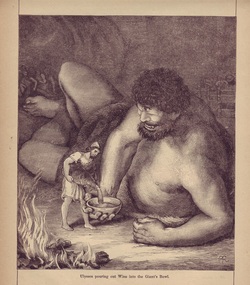 Yesterday's class was a stand-alone unit on literary analysis using Scholastic Scopes Magazine curriculum and a short readers theater script entitled, The Monster in the Cave. Scopes has some great Language Arts lessons, covering many different topics -- you may enjoy browsing the digital lessons list to get some ideas for your own home school. The Monster in the Cave is a re-telling of the famous chapter (Book 9) from Homer's epic poem, The Odyssey, involving our latest hero, Odysseus, and a villainous cyclops named Polyphemus. But was Odysseus clever or cunning, and can a cyclops really be blamed for doing what cyclops do? These questions and many more were answered through several in-class worksheets which we discussed either as a group or in groups of two. The class also viewed a "charming" video told from the view of Polyphemus (watch here: Cyclops: My Side of The Story), and answered questions based on their impressions. For homework, students should complete the "Conclusion" paragraph on page 2 of the worksheet "Epic Traits" and also fill out the four page worksheet "Back to Basics: Literary Elements and Devices." They will probably need to access Scope's Glossary of Literary Terms for definitions of the words that appear in bold. The next two weeks, we will wrap up our study of Greek Mythology utilizing the readers theater script, "Searching for Odysseus" which is roughly Book 15 - Book 24 of The Odyssey. Clicking any of the "Book" links will send you to mythweb.com which gives a good synopsis of the chapters in a short, easy-to-read format. Students may enjoy reading these "books" on mythweb before we meet again next Monday. We are very pleased with the students work in class thus far. As always, please let us know if you have any questions. Until next week! |
Categories
All
Archives
May 2016
|

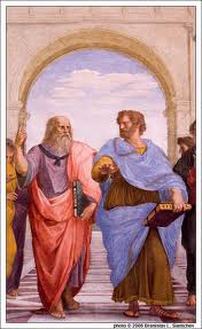
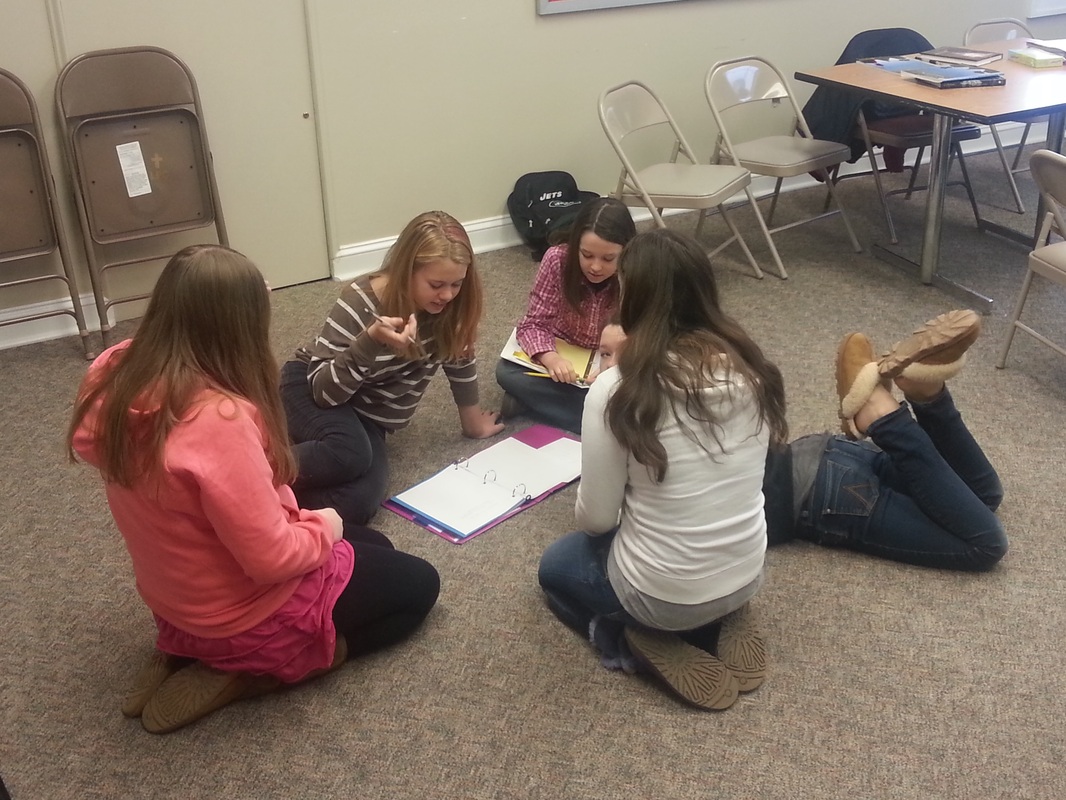
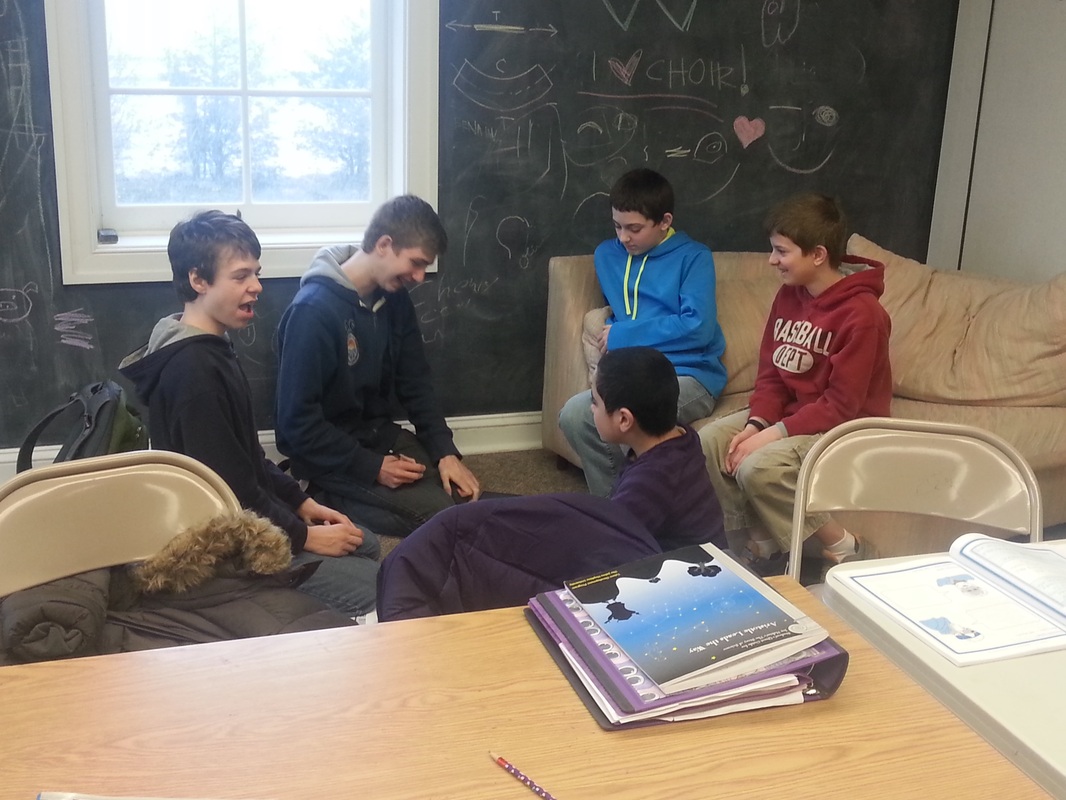
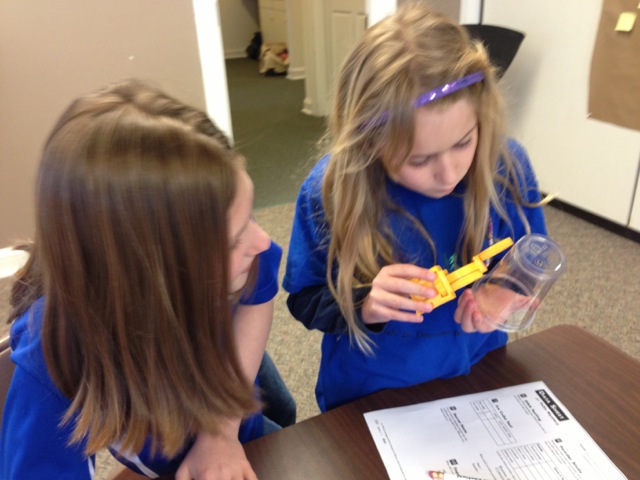
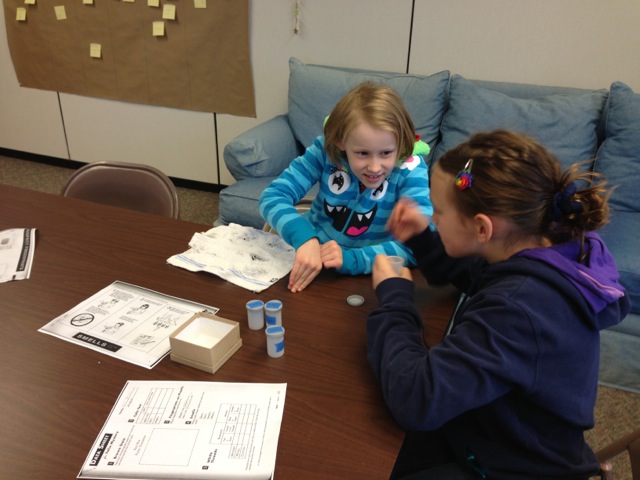
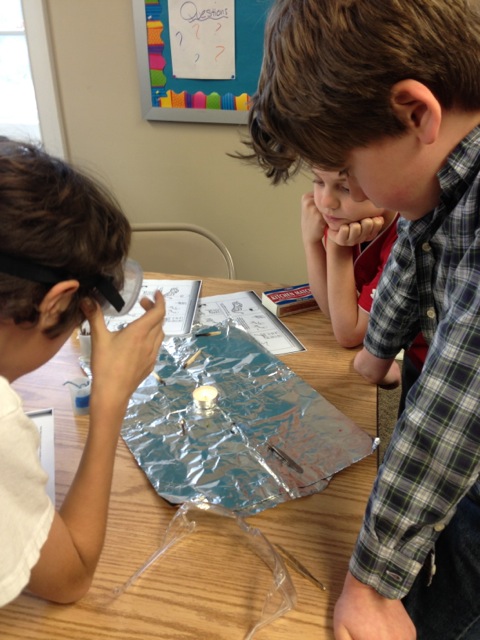

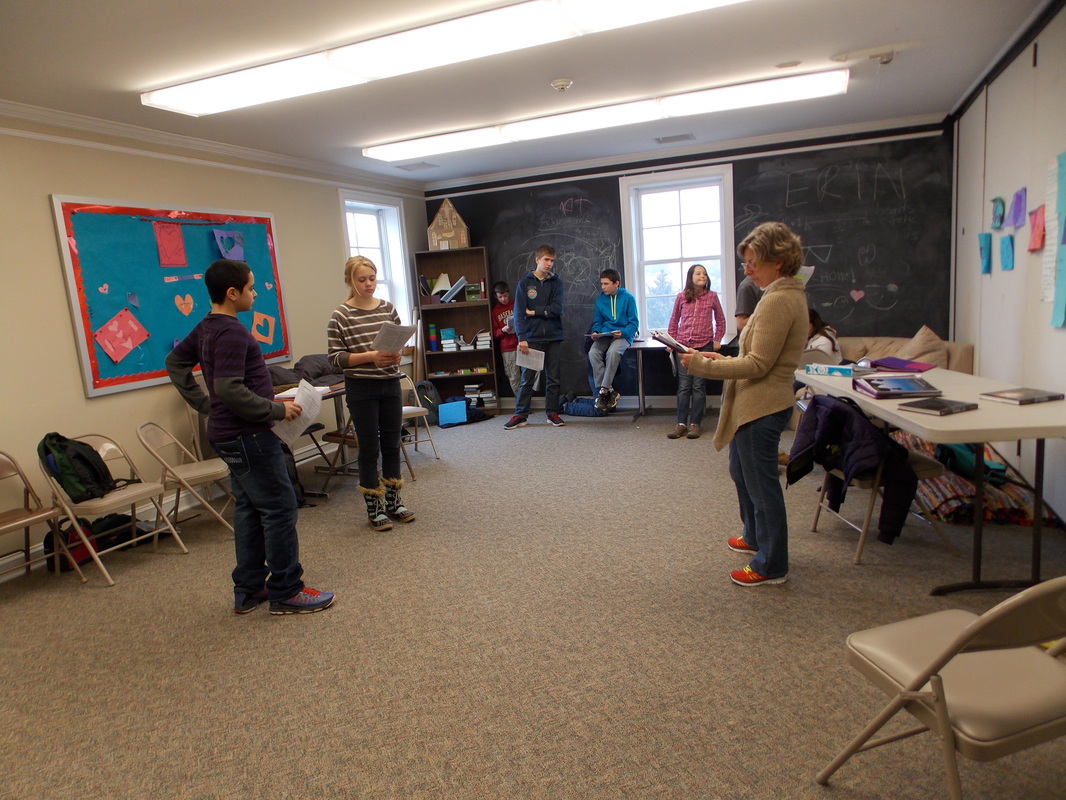
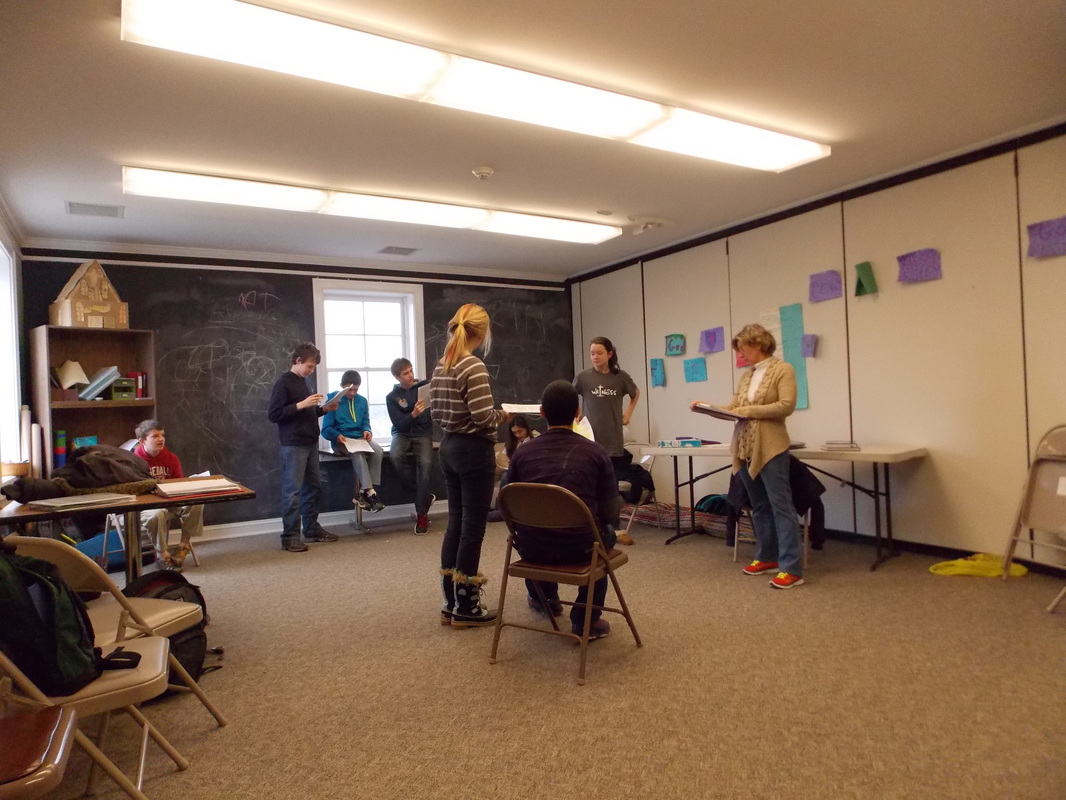
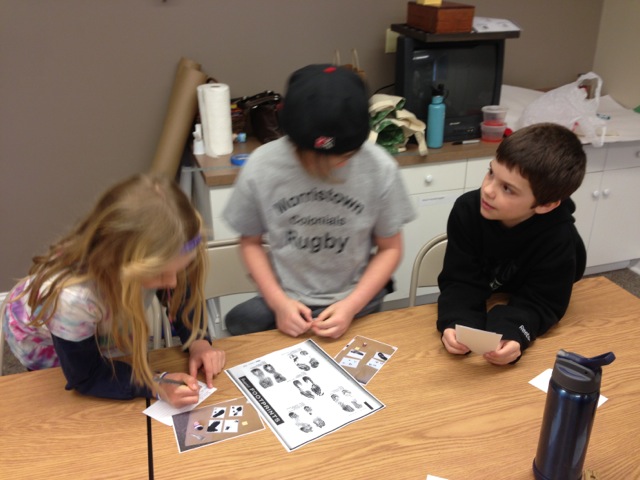
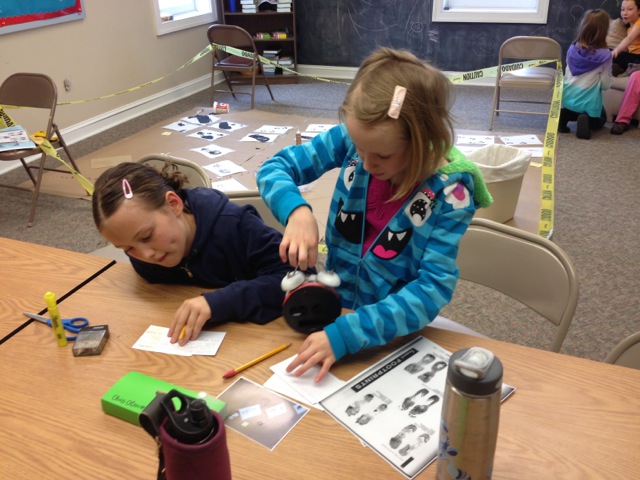
 RSS Feed
RSS Feed